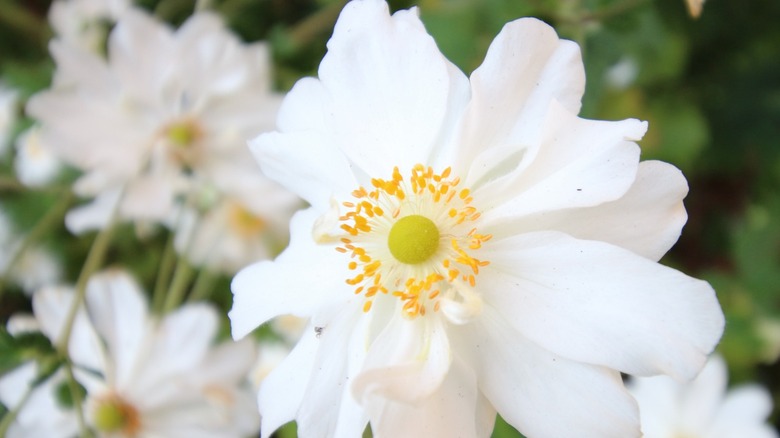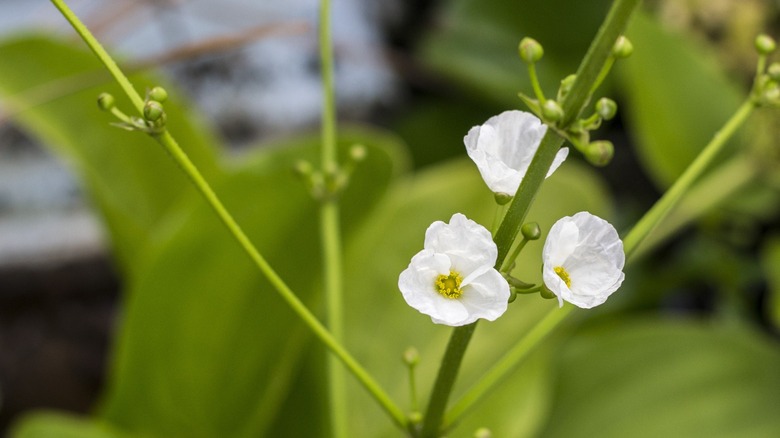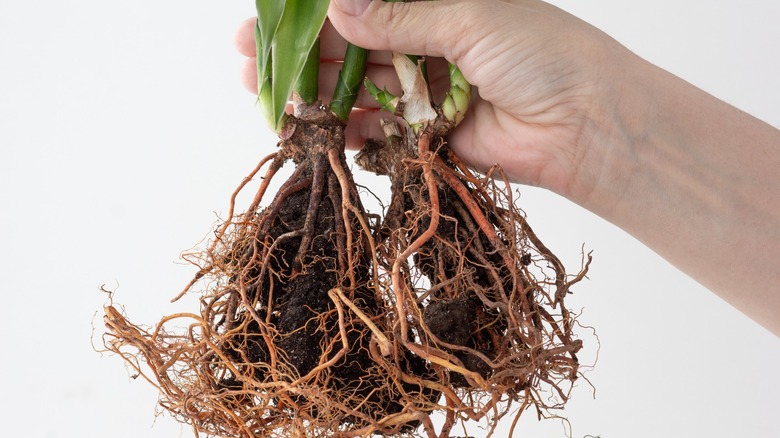Skeleton Flowers Are The Stunning, Totally Unique Addition Your Garden Is Missing
If you're looking for a unique ground cover, planting skeleton flowers is one surefire way to achieve that goal. Its scientific name is Diphylleia grayi, and it's also sometimes called the umbrella plant for its large, umbrella-shaped leaves. What makes the skeleton flower so special? When it rains, something magical occurs. Its soft, lacy white petals become translucent. The veins in the petals are all that show, and they resemble cracks in a shattered piece of sparkling glass.
The transformation is truly stunning and, as you can imagine, quite the center of attention! It happens because the plant has a loose cell structure in the petals of its flowers, so when it rains, the rainwater fills the cells, turning them transparent. When they dry, the white color returns to fill the petals. Another aesthetic wonder of the plant happens when the delicate white flowers fall away in summer and are replaced with beautiful, striking blue berries on bright red stalks before dying back in the winter.
Growing conditions and where to find them
The skeleton flower is native to only three locations in the world: wooded, mountainous regions in China and Japan and the Appalachian Mountains in the United States. But if you live in USDA hardiness zones 4a to 9b, they're definitely a viable option to consider. Keep in mind that these hauntingly ethereal beauties can be difficult to grow except under specific conditions.
Skeleton flowers grow best in shaded, wooded areas that get a lot of rain and no direct sunlight. They need sandy, loamy soil and mostly full shade to thrive. The soil pH requirement is between 4.5 to 7.0. Skeleton flowers typically grow to about 15.75 inches in height and approximately 3 feet across in width. They grow quite slowly, but once a colony is established, they should live a long time.
These flowers are also very rare and hard to find, and growing from seed is a challenge, to say the least. It could take a full year before you get a healthy candidate, and seeds rarely germinate. Your best bet is to check with specialty nurseries for established plants, but you might have to special order them or wait for the next shipment since they sell out fast.
Propagating the skeleton flower
Once established, the best way to propagate the skeleton flower is by dividing the rhizomes, which grow underground like bulbs. Every two or three years, dig up the entire root system in early spring. It will be like a big clump, and you'll need a sharp knife to perform some minor surgery. Separate the clump into sections with a little piece of the root crown in each one. If you're trying to start a new colony, replant the sections you divided up fairly close together and just barely cover the crown with soil.
Although it may take a few years for the skeleton flower to mature and establish a colony, they are extremely rewarding with their exquisite fragility. Unfortunately, they cannot be grown as a traditional houseplant due to the fact that they need a period of cold-induced dormancy in order to flower. But planting a colony of skeleton flowers in your garden will make your house the star of the neighborhood — especially when it rains!


